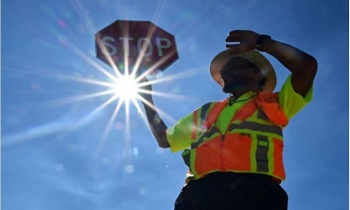More than one in five people face violence, harassment at work: Report
UNB || BusinessInsider

Photo: Representational
More than one in five people employed — almost 23 percent — have experienced violence and harassment at work, whether physical, psychological or sexual, according to a new analysis by the International Labour Organization (ILO), Lloyd’s Register Foundation (LRF) and Gallup.
“The Experiences of Violence and Harassment at Work: A global first survey” assesses the extent of the problem and looks at the factors that may prevent people from talking about what they have gone through, including shame, guilt or a lack of trust in institutions, or because such unacceptable behaviours are seen as “normal.”
“Violence and harassment at work is difficult to measure. The report found that only half of victims worldwide had disclosed their experiences to another person, and often only after they had suffered repeated incidents,” the ILO said.
“The most common reasons given for non-disclosure were waste of time and fear for their reputation. Women were more likely to share their experiences than men (60.7 percent compared to 50.1 percent).”
Globally, 17.9 percent of employed men and women said they had experienced psychological violence and harassment in their working life, and 8.5 percent had faced physical violence and harassment, with more men than women experiencing this.
Of respondents, 6.3 percent reported facing sexual violence and harassment, with women being particularly exposed, the ILO said.
Young people, migrant workers, and salaried women and men have been the most exposed to violence, according to the UN labour agency.
Young women were twice as likely as young men to have faced sexual violence and harassment, while migrant women were almost twice as likely as non-migrants to report sexual violence and harassment.
More than three out of five victims said they had experienced violence and harassment multiple times, and for the majority, the most recent incident took place within the past five years.
“It’s painful to learn that people face violence and harassment not just once but multiple times in their working lives,” Manuela Tomei, ILO assistant director-general for governance, rights and dialogue, said.
“Psychological violence and harassment is the most prevalent across countries, and women are particularly exposed to sexual violence and harassment. The report tells us about the enormity of the task ahead to end violence and harassment in the world of work. I hope it will expedite action on the ground and towards the ratification and implementation of ILO Convention 190.”
The ILO’s Violence and Harassment Convention, 2019 (or 190) and Recommendation (No. 206) are the first international labour standards to provide a common framework to prevent, remedy and eliminate violence and harassment in the world of work, including gender-based violence and harassment.
The Convention includes the specific recognition, for the first time in international law, of the right of everyone to a world of work, free from violence and harassment, and outlines the obligations of signatories towards this end.
























